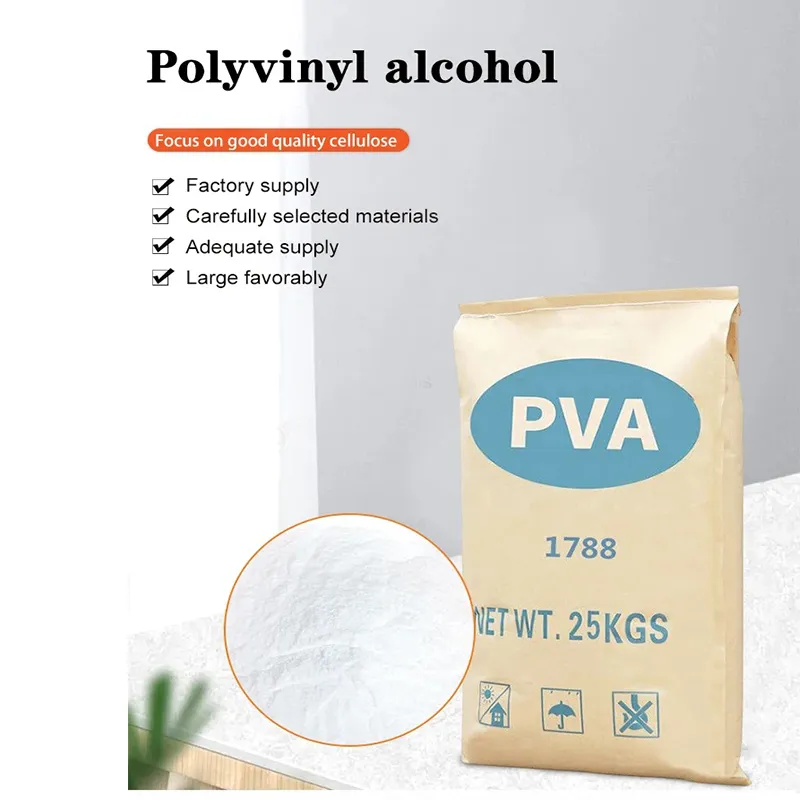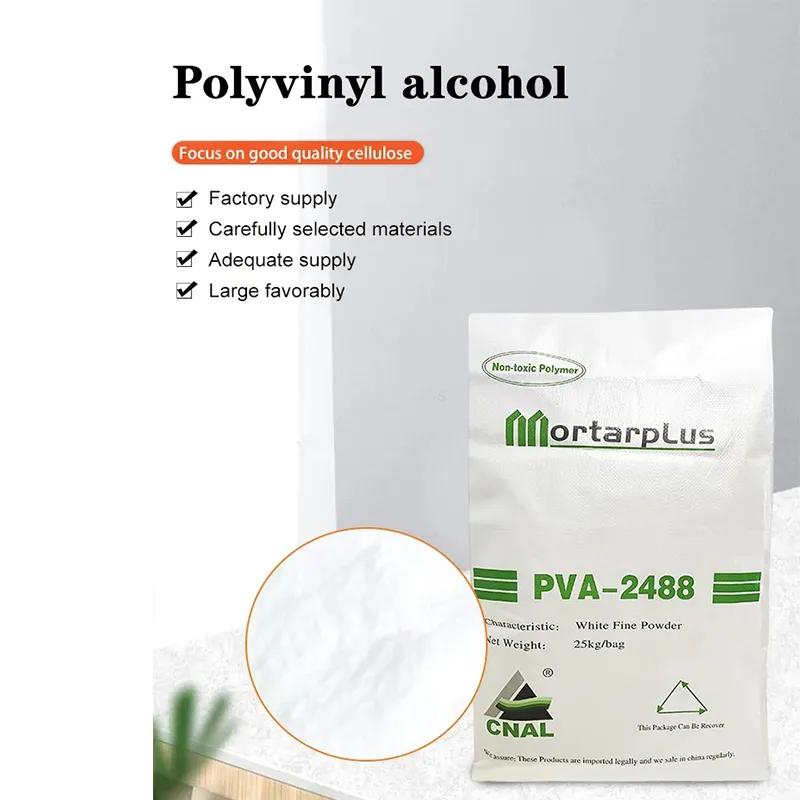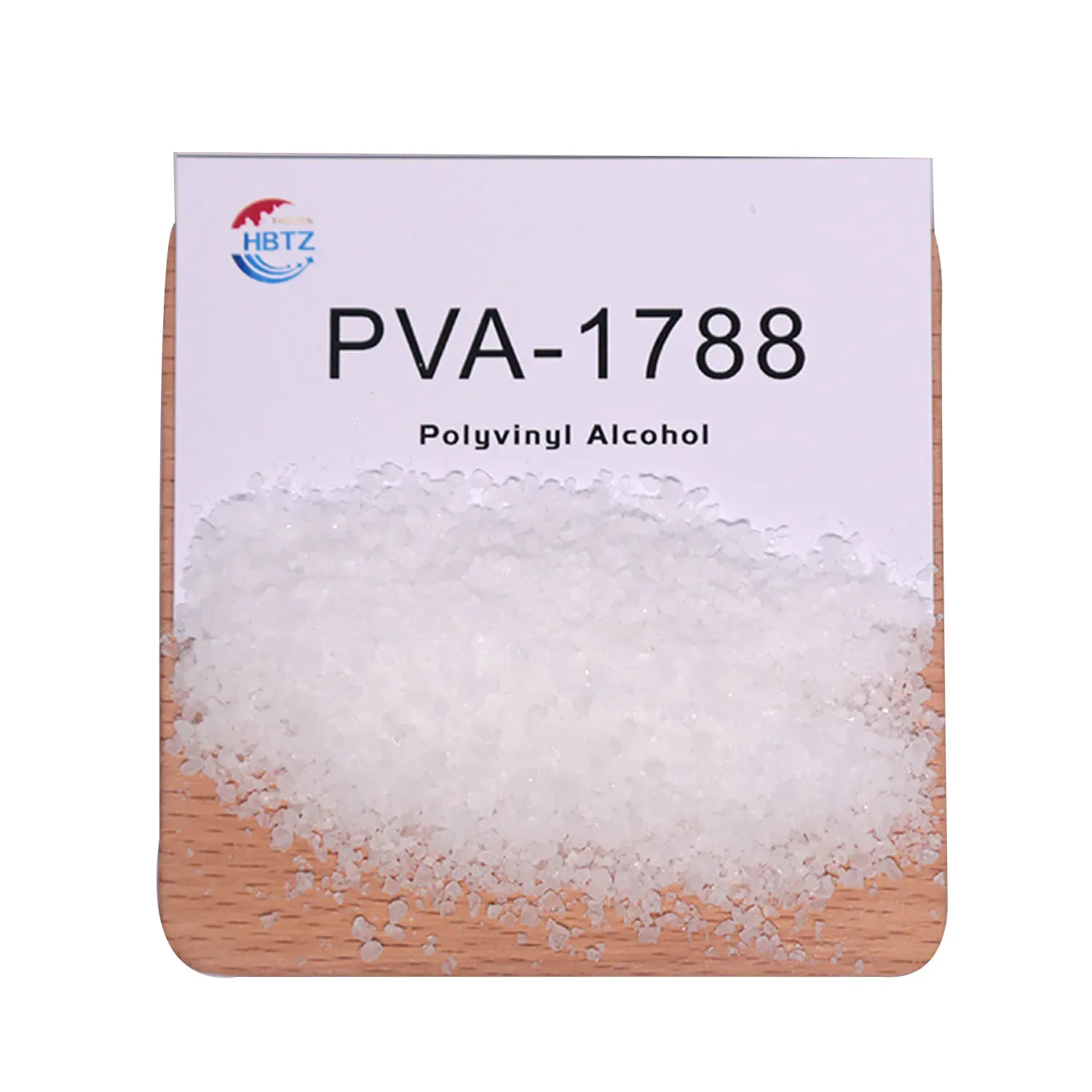
Why Choose Polyviny Alcohol—High Purity, Fast-Dissolving?
Polyviny Alcohol (PVA): insider notes, practical specs, and where it really shines
If you’ve been around packaging films, construction additives, or textile sizing, you’ve definitely bumped into polyviny alcohol. To be honest, it’s one of those quietly indispensable materials—white flake or powder, odorless, and surprisingly versatile. It dissolves in water when hot (above ≈95°C), shrugs off most common solvents, and, as many customers say, “just works” when you need film strength, emulsification, or clean adhesion.

How it’s made (real-world process flow)
- Materials: vinyl acetate monomer (VAM), initiator, alcoholysis catalyst, methanol/ethanol, deionized water.
- Method: suspension polymerization of VAM → polyvinyl acetate (PVAc); then alcoholysis (hydrolysis) converts PVAc to polyviny alcohol.
- Finishing: washing → drying → milling → sieving → anti-caking control → packaging (moisture-barrier bags).
- QC checkpoints: viscosity (4% aq., 20°C), degree of hydrolysis (mol%), ash, pH, volatiles, gel content.
- Testing standards: tensile per ASTM D882; WVTR per ASTM E96; DSC per ASTM D3418; biodegradability screening per OECD 301 (lab dependent).
- Typical service life: in dry film rolls ≈12–24 months sealed; in mortar mixes, functional performance persists through service life of the host system (real-world use may vary).

Product spec snapshot
Below is a compact view; custom grades are common, especially for film casting and cementitious modifiers.
| Parameter | Typical Range (≈) | Notes |
|---|---|---|
| Appearance | White flake/powder | Odorless |
| Degree of hydrolysis | 87–99.5 mol% | Higher = lower cold-water solubility |
| Viscosity (4% aq., 20°C) | 3–60 mPa·s | Grade dependent |
| Ash content | ≤0.7% | Sodium-based catalysts common |
| Solubility | Hot water (>95°C) | Insoluble in gasoline/ketones/esters |

Where it’s used (and why it wins)
- Packaging films: water-soluble laundry pods, agro-chemical sachets; strong, clear, excellent oxygen barrier when dry.
- Construction: polyviny alcohol as a redispersible binder companion and fiber sizing; boosts adhesion and flexural behavior.
- Textiles & paper: sizing, paper coatings; better runnability, less lint, crisp finish.
- Adhesives & emulsions: emulsifier/protective colloid in PVAc dispersions; clean bonding, low odor.
- Ceramics & 3D casting: binder that burns out cleanly; stable green strength.
Advantages: film strength, clarity, emulsification, low toxicity profile, and—surprisingly—decent biodegradation under specific tests (check OECD 301 data per supplier).

Vendor landscape (quick comparison)
| Vendor | Grades | Certifications | Lead Time | Notes |
|---|---|---|---|---|
| Tangzhi (Origin: Room 2308, Dongsheng Plaza 2, No.508 Zhongshan East Rd., Chang’an Dist., Shijiazhuang, Hebei, China) | Medium–high DH, film & adhesive grades | ISO 9001/14001 (typical) | ≈2–4 weeks | Custom viscosity targets; competitive MOQ |
| Global Tier-1 A | Broad DH portfolio; specialty barrier films | ISO, food-contact letters | ≈4–8 weeks | Premium pricing, robust tech support |
| Regional Producer B | Adhesive & textile grades | ISO 9001 | ≈3–5 weeks | Cost-effective; limited specialty range |

Customization, case notes, and feedback
- Customization levers: degree of hydrolysis, viscosity window, particle size, anti-caking, and residual methanol control.
- Case study (packaging film): brand switched to polyviny alcohol 90–95 mol% DH, mid-viscosity. Outcome: ≈18% higher tensile (ASTM D882), 12% lower WVTR (ASTM E96) at 23°C/50% RH; fewer breaks on cast line.
- Case study (cement additive): mortar with 0.2% PVA showed better workability and reduced surface dusting after 28 days; contractors reported smoother trowel feel.
- Customer feedback: “Predictable dissolving, clean pot life, and no solvent headaches.”
Compliance and documentation
Check food-contact suitability per 21 CFR 177.1670 for PVA films, material safety data, RoHS/REACH statements, and biodegradation screening (OECD 301). For film performance, we typically validate per ASTM D882 and ASTM E96. Honestly, that paperwork saves you headaches later.
Final tip
When in doubt, request two pilot grades—one lower and one higher viscosity polyviny alcohol—and run them side by side. The right DH/viscosity combo is where projects usually click.
Authoritative citations
- ASTM D882 – Standard Test Method for Tensile Properties of Thin Plastic Sheeting.
- ASTM E96 – Standard Test Methods for Water Vapor Transmission of Materials.
- ASTM D3418 – Standard Test Method for Transition Temperatures of Polymers by DSC.
- OECD 301 – Ready Biodegradability Test Guidelines.
- 21 CFR 177.1670 – Polyvinyl alcohol film (Food and Drug Administration, USA).
-
Reliable Powdered Cellulose Supplier: Quality, Sustainability & InnovationNewsNov.24,2025
-
Find Trusted Microfibrillated Cellulose Suppliers for Sustainable Industrial SolutionsNewsNov.24,2025
-
Leading Methocel Suppliers: Quality, Innovation & Sustainability in Methylcellulose SupplyNewsNov.23,2025
-
Reliable Hydroxyethylcellulose Suppliers for Industry & Sustainability | Tangzhi HPMCNewsNov.23,2025
-
Top Ethyl Cellulose Supplier – Quality, Sustainability, and Industrial SupportNewsNov.23,2025
-
Trusted CMC Powder Suppliers for Food, Pharma & Industrial Use | Tangzhi HPMCNewsNov.22,2025





















